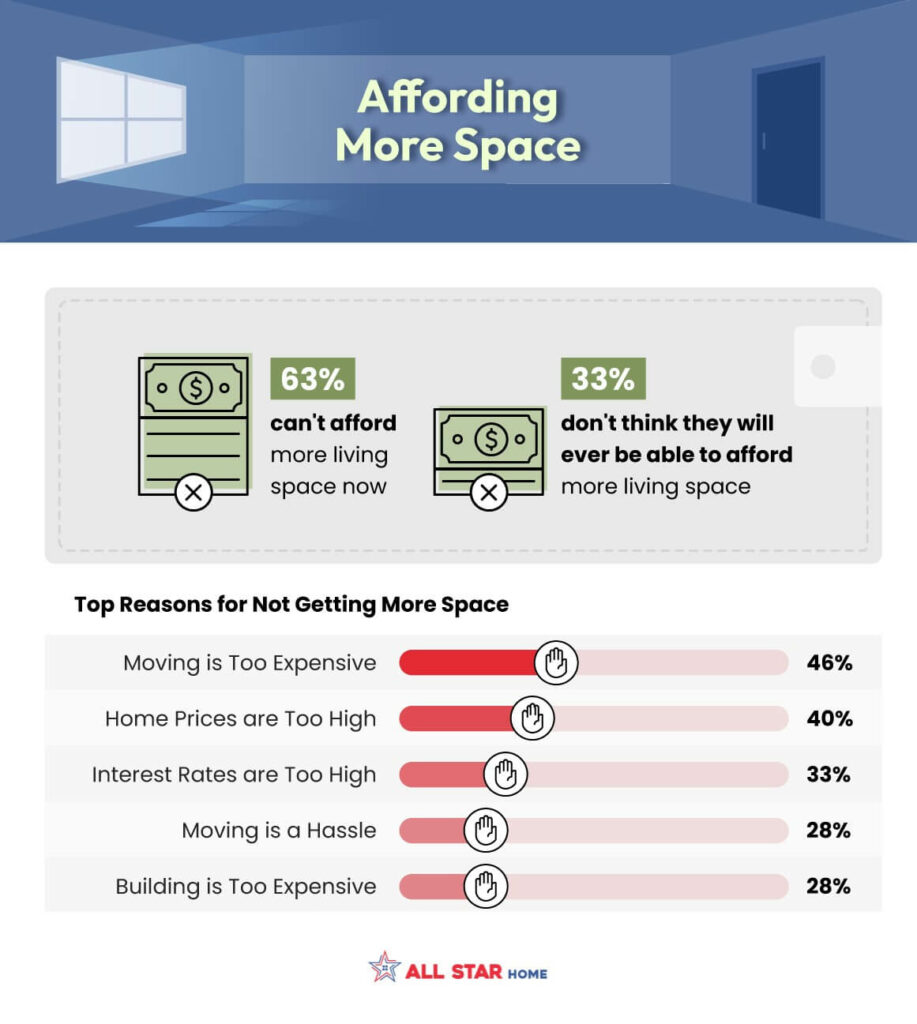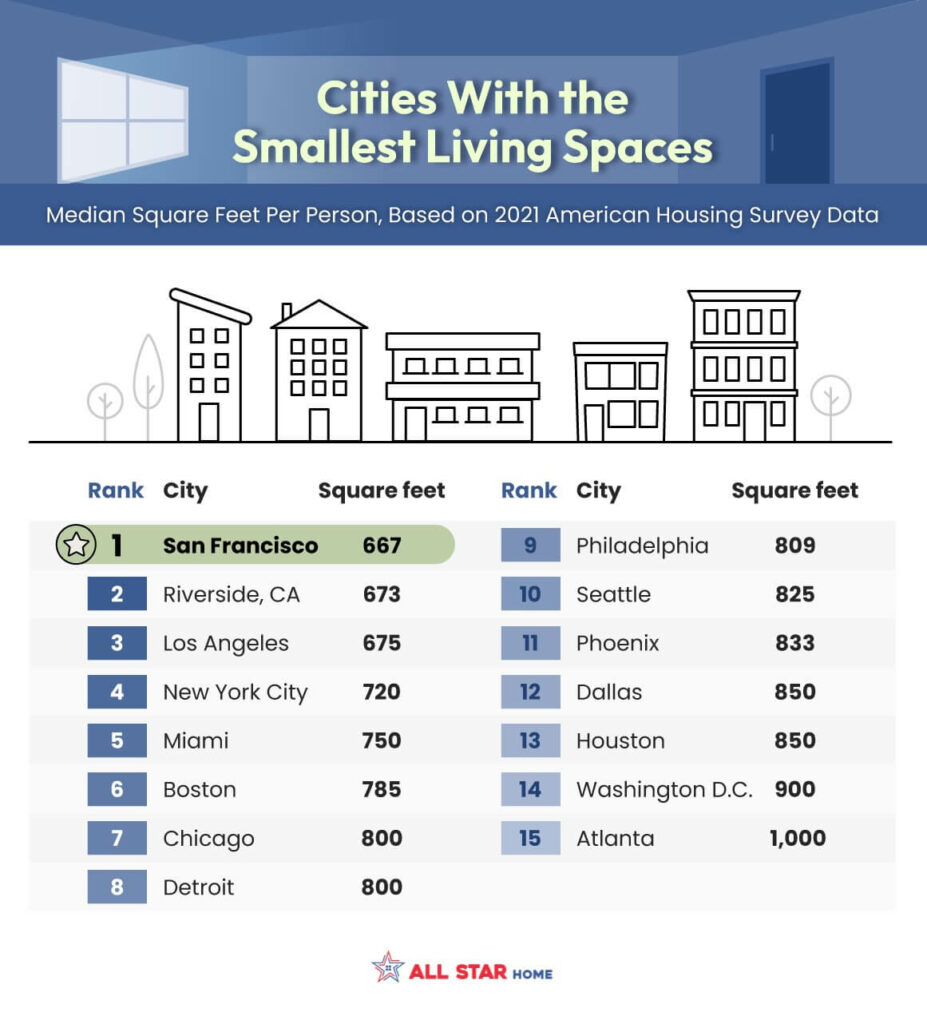 A new report from All Star Home analyzed U.S. Census Bureau data to determine which U.S. cities had the smallest living spaces in the country’s top 15 metropolitan areas.
A new report from All Star Home analyzed U.S. Census Bureau data to determine which U.S. cities had the smallest living spaces in the country’s top 15 metropolitan areas.
When it comes to city living, space is generally limited, as it’s widely known that city dwellers often have to make do with less. All Star Home gauged the feelings of residents of these areas to see how they feel about the size of their living space.
According to the survey of 800 American homeowners, the average living space is 1,841-square-feet, nearly triple the size of the average living space (per person) in San Francisco. Despite that, 51% of homeowners desire more space after having accumulated more belongings, a pet, and the fact they are now working remotely from home.
The primary reason more space was desired was to house their belongings. More than two in five (43%) of those polled stated that their belongings made it hard to live in their space, and 36% feel the biggest struggle in their current home is not having enough storage space. The other two major reasons they are seeking more space were due to owning a pet (37%), and working remotely from home (30%). People also reported that the space was never big enough to begin with (31%), or they have simply outgrown their current space (25%).
Those seeking to upgrade their living space often targeted a larger kitchen area, more storage options, bigger bedrooms and bathrooms, and a garage to store their accumulated belongings.
A primary reason given for not upgrading their space was affordability, with 63% of Americans who wanted more living space, said they can’t afford it in this current market. Approximately 30% of those polled believe that they will never be able to afford more space. The price of moving or building is just too expensive right now, as high home prices and interest rate hovering well above the 7%-mark as two major obstacles to overcome. Others polled listed the hassle of moving as another reason they haven’t pursued more living space.

And while American homeowners aren’t entirely happy with the size of their living space, there are some positives, as 79% of those polled felt that smaller living spaces are easier to maintain, and nearly three in four believe they could live in a smaller living space, especially if it meant it could save them money. The poll found that 49% would consider downsizing if it meant they could keep more cash in their pocket.
When polling the nation’s top cities with the smallest living spaces, the top three cities were located in California, with San Francisco featuring the smallest living space at 667-square-feet per person. And while residents of California’s Golden City in the North have had to embrace innovative housing solutions and smaller spaces, so have residents in the southern part of the state. Located just outside of Los Angeles, Riverside came in second at 673-square-feet per person, and not too far behind was Los Angeles measuring slightly larger at 675-square-feet.

New York City reported the fourth smallest living space with 720-square-feet per person. Miami (750-square-feet) and Boston (785-square-feet) have slightly larger living spaces, but are still less than 800-square-feet per person. Not far off were the Midwest metros of Chicago and Detroit both of which boast 800-square-feet per person. Properties in Philadelphia were slightly more spacious, at 809-square-feet per person, and Seattle rounded out the top 10 U.S. cities with the smallest living spaces with 825-square-feet per person.
Rounding out the top 15, properties in Phoenix reported 833-square-feet per person, while in Dallas and Houston, residents get 850-square-feet per person, and in Washington, D.C., properties had 900-square-feet per person. The largest living space was found in Atlanta, with 1,000-square-feet per person.
For their analysis, All Star Homes we analyzed data from the U.S. Census Bureau’s 2021 American Housing Survey using the owner “Tenure Filter” to find the median square footage for properties in the top 15 metropolitan areas and ranked them from smallest to largest. In August 2023, 801 American homeowners were polled about the size of their living spaces, and what they would want in a larger space. In terms of living conditions, 83% of respondents lived in single-family homes, 4% in townhomes, 3% in multi-family homes, 3% in condos, 3% in mobile homes, 2% in apartments, 1% in tiny homes, and 1% in co-ops. Respondents were 50% male, 49% female, and 1% non-binary. Respondents ranged in age from 19 to 76 with an average age of 47-years-old.
Click here for more on the report from All Star Homes.

 theMReport.com Your trusted source for mortgage banking news
theMReport.com Your trusted source for mortgage banking news








